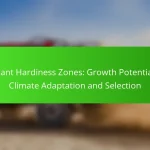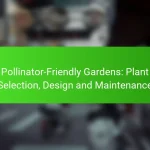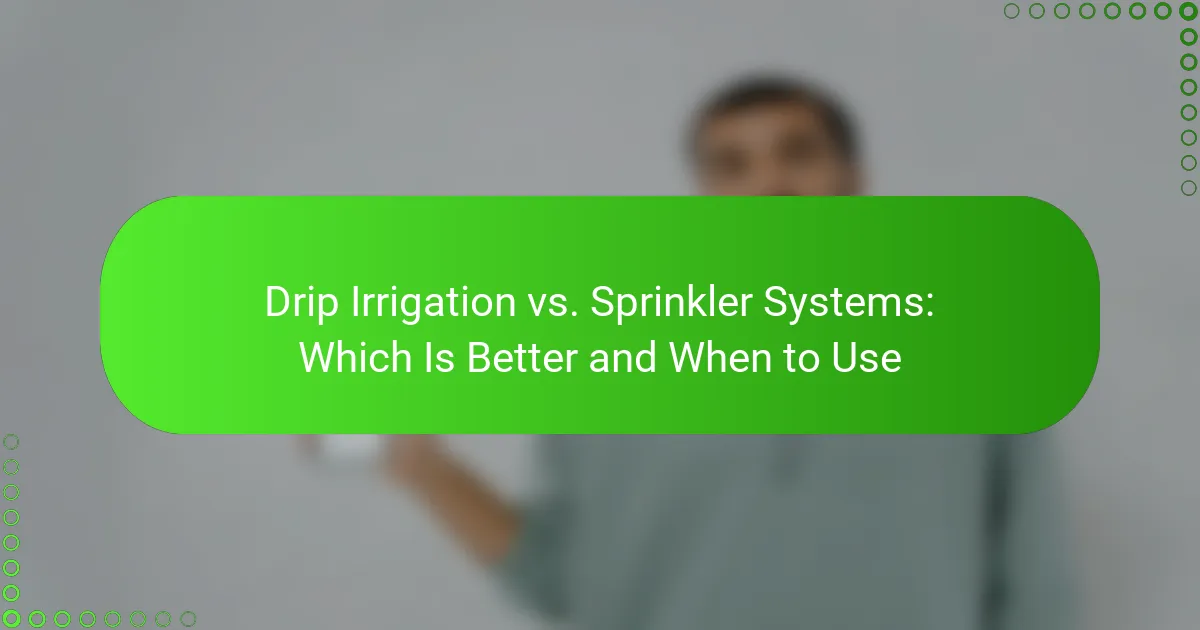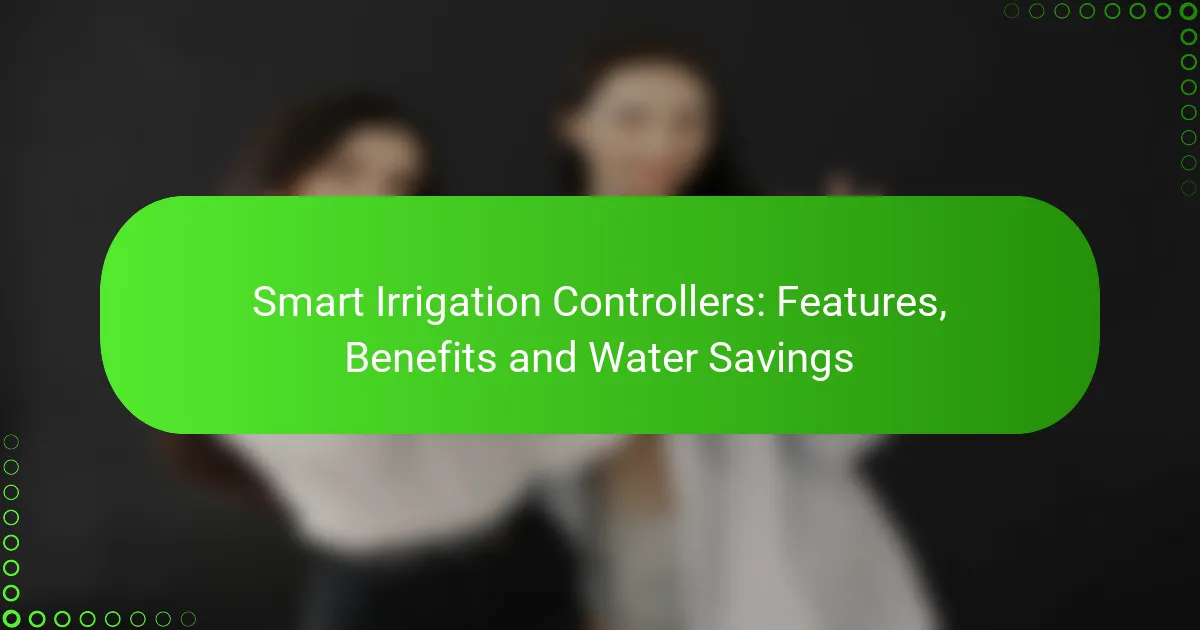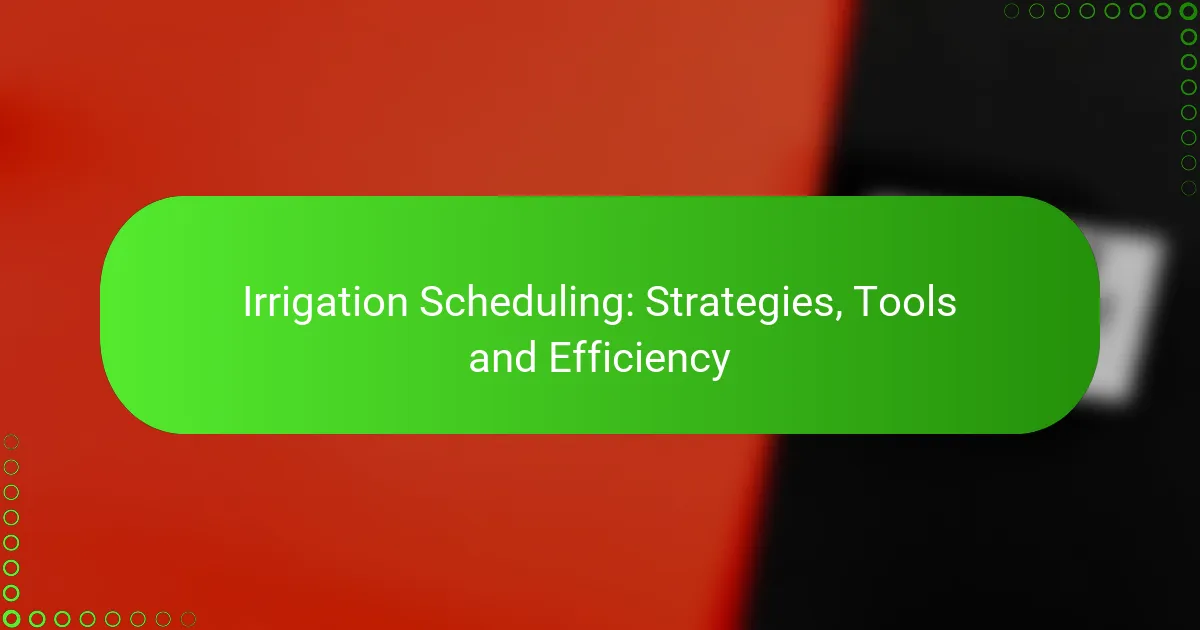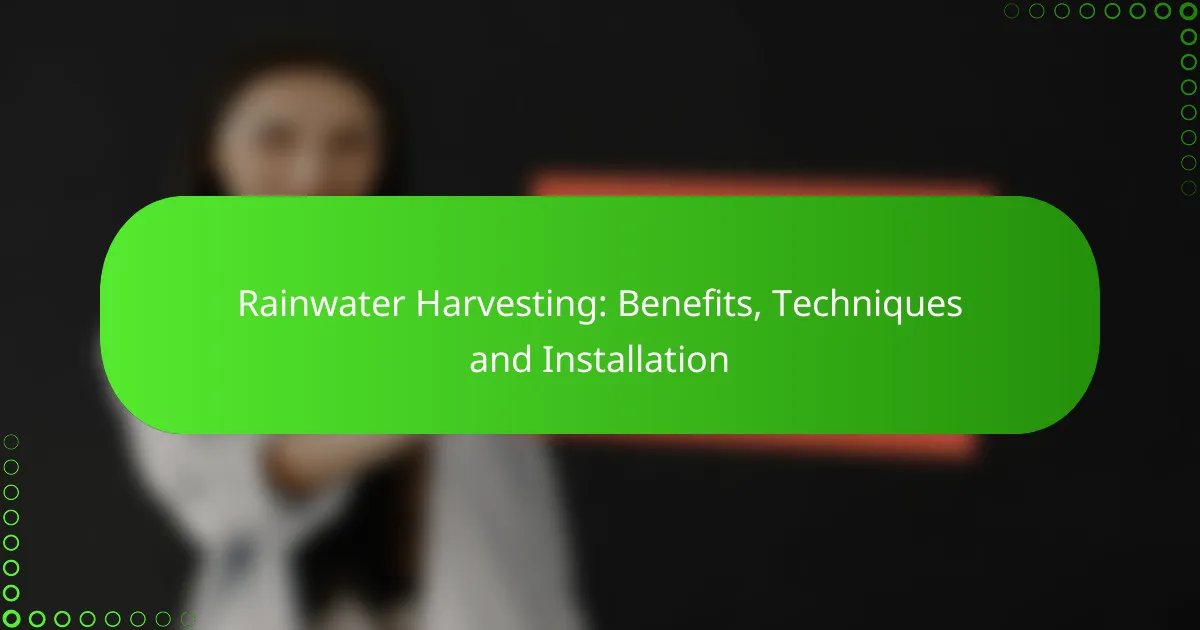When it comes to irrigation, choosing between drip systems and sprinklers can significantly impact water efficiency and plant health. Drip irrigation excels in water-scarce regions by delivering water directly to the roots, while sprinkler systems are ideal for larger areas and diverse plant types. Understanding the strengths of each method will help you make an informed decision based on your specific needs and environmental conditions.
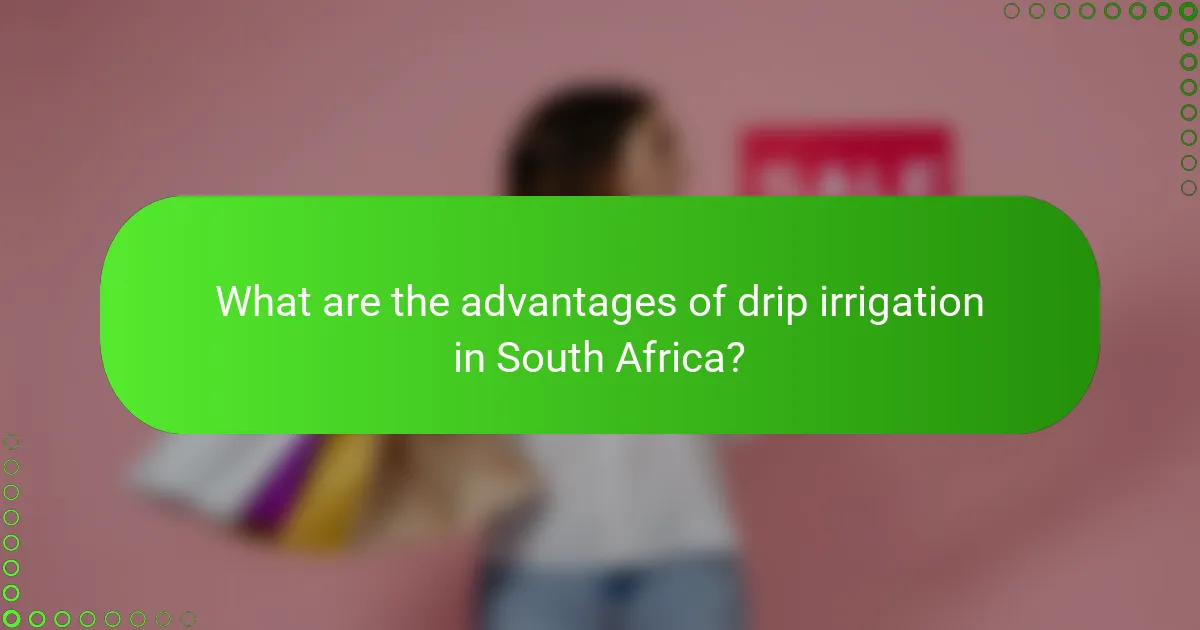
What are the advantages of drip irrigation in South Africa?
Drip irrigation offers several advantages in South Africa, particularly in water-scarce regions. This method delivers water directly to the plant roots, enhancing efficiency and promoting healthier crop growth.
Water efficiency
Drip irrigation is highly efficient, using significantly less water than traditional sprinkler systems. It can reduce water usage by up to 50%, making it ideal for South Africa’s arid climate. This efficiency not only conserves water but also lowers utility costs for farmers.
Reduced weed growth
By delivering water directly to the plants, drip irrigation minimizes moisture in the surrounding soil, which helps to suppress weed growth. This targeted watering reduces competition for nutrients and water, allowing crops to thrive without the added burden of weeds.
Targeted nutrient delivery
Drip systems can be integrated with fertigation, allowing for precise nutrient application directly to the root zone. This targeted delivery ensures that plants receive the necessary nutrients without waste, promoting healthier growth and potentially increasing yields.
Lower labor costs
With automated drip irrigation systems, the need for manual watering decreases, leading to lower labor costs. Farmers can save time and resources, allowing them to focus on other critical aspects of farm management.
Adaptability to various crops
Drip irrigation is versatile and can be used for a wide range of crops, from vegetables to fruit trees. This adaptability makes it suitable for diverse agricultural practices in South Africa, enabling farmers to optimize their irrigation strategies based on specific crop needs.

What are the benefits of sprinkler systems in South Africa?
Sprinkler systems offer several advantages for irrigation in South Africa, particularly for large-scale agricultural operations and residential gardens. They provide efficient water distribution, making them suitable for diverse plant types and varying terrain.
Coverage of large areas
Sprinkler systems are designed to cover extensive areas effectively, making them ideal for farms and large gardens. They can distribute water evenly over several hectares, ensuring that all plants receive adequate moisture.
Using rotating or oscillating sprinklers can enhance coverage, allowing for uniform watering without the need for manual intervention. This is particularly beneficial in regions with inconsistent rainfall.
Ease of installation
Installing a sprinkler system is generally straightforward, especially compared to more complex irrigation methods like drip systems. Most systems can be set up with basic tools and minimal technical knowledge.
Homeowners can often install above-ground systems themselves, while underground systems may require professional help but are still less complicated than drip installations. This accessibility makes sprinkler systems a popular choice.
Flexibility in application
Sprinkler systems offer flexibility in terms of watering schedules and techniques. They can be adjusted to deliver varying amounts of water based on the needs of different plants or changing weather conditions.
With timers and sensors, users can automate the system to operate during optimal times, reducing water waste and ensuring plants receive the right amount of moisture throughout the growing season.
Less initial investment
Compared to drip irrigation systems, sprinkler systems typically require a lower initial investment. The cost of materials and installation is often more manageable, making it a viable option for budget-conscious farmers and gardeners.
This lower upfront cost allows users to allocate funds to other essential farming needs or garden enhancements, making it an attractive option for many in South Africa.
Suitable for various terrains
Sprinkler systems can be adapted to different terrains, from flat fields to hilly landscapes. They can be positioned to accommodate the natural contours of the land, ensuring efficient water distribution regardless of topography.
This adaptability makes them a preferred choice for diverse agricultural practices in South Africa, where varying soil types and elevations can impact irrigation effectiveness.
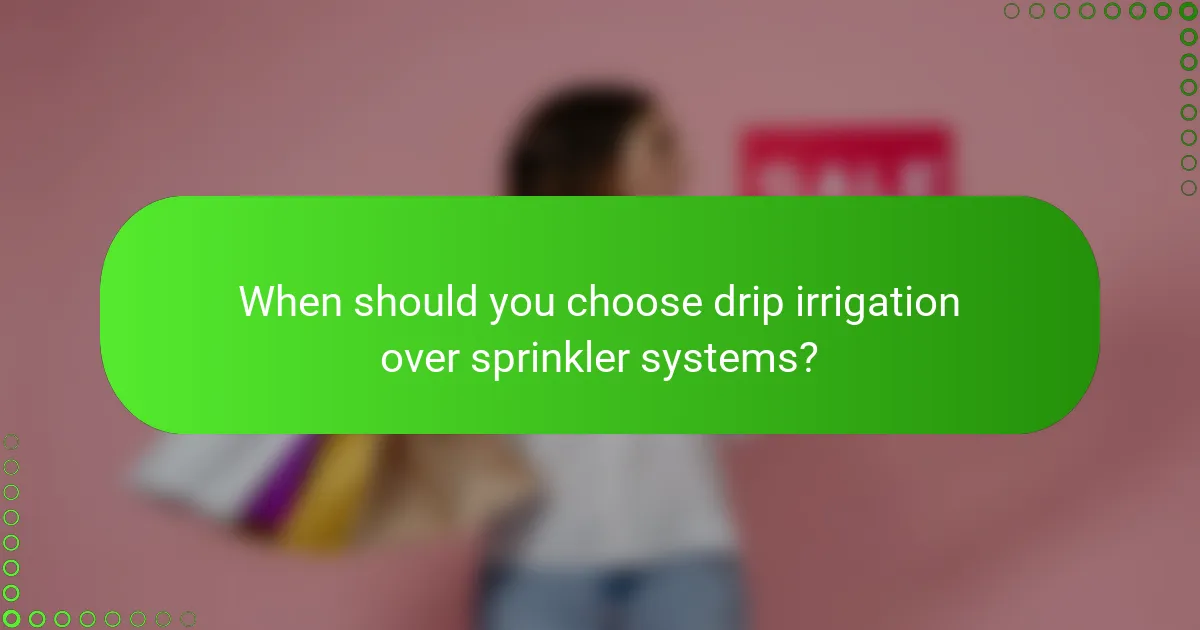
When should you choose drip irrigation over sprinkler systems?
Drip irrigation is often the better choice when precise water delivery is needed, especially in areas with limited water resources. It efficiently targets the root zone of plants, reducing water waste and minimizing evaporation.
Soil type considerations
The type of soil in your garden or field significantly influences the choice between drip irrigation and sprinkler systems. Drip irrigation works well in sandy or loamy soils, where water can easily penetrate and reach plant roots. Conversely, clay soils may retain water, making sprinkler systems more effective for even distribution.
Crop water needs
Understanding the water requirements of your crops is crucial. Drip irrigation is ideal for crops that need consistent moisture, such as tomatoes or peppers, as it delivers water directly to the roots. Sprinkler systems may be better suited for larger areas with crops that have varying water needs, allowing for broader coverage.
Climate factors
Climate plays a vital role in determining the best irrigation method. In hot, dry climates, drip irrigation minimizes evaporation losses, making it a more efficient option. In contrast, regions with high humidity or frequent rainfall may benefit from sprinkler systems to prevent waterlogging and fungal diseases.
Budget constraints
Your budget can significantly impact your choice of irrigation system. Drip irrigation systems typically have higher initial costs due to the materials and installation required. However, they can lead to long-term savings on water bills and labor. Sprinkler systems may be less expensive to install initially but can incur higher operational costs over time.
Field layout
The layout of your field or garden can dictate the most effective irrigation method. Drip irrigation is advantageous in irregularly shaped plots or areas with obstacles, as it can be customized to fit the space. Sprinkler systems are more efficient in large, open fields where uniform coverage is easier to achieve.

What factors influence the decision between drip irrigation and sprinkler systems?
The choice between drip irrigation and sprinkler systems depends on several factors, including the type of crops, soil conditions, water availability, and budget. Understanding these elements can help determine which system is more efficient and cost-effective for your specific needs.
Water Efficiency
Drip irrigation is generally more water-efficient than sprinkler systems, as it delivers water directly to the plant roots, minimizing evaporation and runoff. This method can reduce water usage by up to 50% compared to traditional sprinklers, making it ideal for areas with limited water resources.
On the other hand, sprinkler systems can cover larger areas quickly but may lead to higher water loss through evaporation, especially in hot and windy conditions. When choosing a system, consider local climate and water availability to maximize efficiency.
Soil Type and Crop Requirements
The type of soil and the specific needs of your crops play a crucial role in deciding between these irrigation methods. Drip irrigation is particularly beneficial for sandy soils that drain quickly, as it ensures consistent moisture levels. It is also suitable for row crops and gardens where precise watering is essential.
Sprinkler systems, however, are better for larger fields or lawns where uniform coverage is needed. They can effectively water a variety of plants but may not provide the targeted moisture that some crops require. Assessing your soil type and crop requirements will guide your decision.
Installation and Maintenance Costs
Installation costs can vary significantly between drip irrigation and sprinkler systems. Drip systems often require more initial investment due to the need for tubing, emitters, and filtration systems. However, they can lead to savings in water bills over time.
Sprinkler systems typically have lower upfront costs and are easier to install, making them a popular choice for homeowners. Regular maintenance is essential for both systems, but drip irrigation may require more frequent checks to prevent clogging. Weighing the long-term costs against initial expenses is vital for making an informed choice.
Flexibility and Scalability
Drip irrigation systems offer greater flexibility and scalability, allowing you to easily adjust the layout as your garden or crop area expands. This adaptability is particularly useful for farmers who may want to change their planting strategies over time.
Sprinkler systems can also be expanded, but modifications may require more effort and resources. Consider your future plans for the land when choosing an irrigation system to ensure it can accommodate growth and changes in crop types.
